Did you know that ornamental kale can transform your garden into a colorful and exciting display? This stunning plant, also known as decorative kale or flowering kale, offers vibrant colors and unique foliage, adding a touch of beauty to any outdoor space. While it belongs to the same species as edible cabbages, broccoli, and cauliflower, ornamental kale is grown for its large rosettes of colorful foliage rather than its flowers.
Ornamental kale comes in a variety of colors, ranging from white to pinks, purples, and reds. The leaves can be curly, ruffled, featherlike, or frilly, creating a visually appealing and eye-catching display. With their cold-tolerant nature, these plants thrive in cool weather, making them ideal for fall gardens.
Key Takeaways:
- Ornamental kale, also known as decorative kale or flowering kale, is a stunning addition to any garden.
- The plants offer vibrant colors and unique foliage, creating a visually appealing display.
- Ornamental kale comes in a variety of colors, from white to pinks, purples, and reds.
- These plants are cold-tolerant and thrive in cool weather, making them perfect for fall gardens.
- Whether used in mass plantings, containers, or as edgings, ornamental kale can transform your outdoor space into a colorful and captivating oasis.
The Beauty of Ornamental Kale
Ornamental kale plants are known for their striking beauty. Their foliage comes in various colors and textures, adding visual interest to any garden. The leaves can be curly, ruffled, featherlike, or frilly, creating a unique and eye-catching display.
The outer leaves are typically blue-green, while the centers are brightly colored in shades of red, pink, purple, green, yellow-green, or creamy white. The colors of ornamental kale intensify when night temperatures drop below 60 degrees Fahrenheit, and they become even more vibrant with frost and colder weather. These plants can withstand temperatures as low as 5 degrees Fahrenheit and remain colorful until the mercury drops to 20 degrees Fahrenheit. Their beauty makes them perfect for adding a splash of color to your garden during the fall and early winter months.
The Vibrant Colors of Ornamental Kale
Ornamental kale plants are available in a wide range of vibrant colors, making them a delightful addition to any garden. The outer leaves often have a blue-green tint, providing a cool and serene backdrop. However, it’s the center of the foliage where the real magic happens. The colors can range from bold and fiery reds, pinks, and purples to soft and delicate shades of green, yellow-green, and creamy white.
These kale plants are like living canvases, presenting an array of colors that can brighten up any outdoor space. Their vivid hues create a captivating visual display and can serve as focal points in gardens, containers, or borders.
“Ornamental kale plants are a true kaleidoscope of color, with each variety offering a unique and stunning display.”
The Texture and Form of Ornamental Kale
Not only do ornamental kale plants offer a vibrant color palette, but their unique texture and form contribute to their overall beauty. The leaves can be curly, ruffled, featherlike, or frilly, giving them an intricate and captivating appearance. These textured leaves create depth and visual interest in your garden, adding dimension to your overall landscape design.
The combination of the ornamental kale’s vibrant colors and textured foliage makes it a show-stopping addition to any garden or container planting. Whether used as a centerpiece or scattered throughout your outdoor space, these kale plants are sure to make a statement.
Growing Ornamental Kale
Growing ornamental kale can be a rewarding experience, but it requires some careful considerations. These beautiful plants, with their vibrant colors and unique foliage, thrive in cooler weather and do not tolerate the summer heat. That’s why the fall season is the best time to plant ornamental kale.
When it comes to starting your ornamental kale garden, you have two options: starting from seed or purchasing transplants. Starting from seed allows you to choose from a wider variety of kale plants and experiment with different colors and textures. Sow the seeds 6-10 weeks before the first frost, but remember, ornamental kale seeds require light for germination, so do not cover them with soil. To encourage germination, you can place the pot with seeds in the refrigerator for several days.
Once the plants are established, they require a sunny location in moderately moist, rich soil. Bury the stem so that the lowest leaves are flush with the soil surface. This will provide stability and support for the plants as they grow. Keep the plants well-watered, as ornamental kale prefers consistently moist soil.
Ornamental kale can be combined with other cool-season annuals, such as pansies or snapdragons, to create a beautiful and colorful display. They also look stunning when planted in mass plantings, containers, or used as edgings in garden beds.
With proper care and attention, your ornamental kale plants will reward you with their vibrant colors and beautiful foliage throughout the fall season. So go ahead, get your hands dirty, and enjoy the process of growing these stunning ornamental plants.
Ornamental Kale Varieties
There are many different varieties of ornamental kale to choose from, each with its own unique characteristics. Some popular cultivars include the ‘Chidori’ Series, ‘Color Up’ Series, ‘Nagoya’ Series, ‘Osaka’ Series, and ‘Peacock’ Series.
‘Chidori’ Series
The ‘Chidori’ Series features purple foliage with extremely curly leaf margins and a cream white or deep magenta center.
‘Color Up’ Series
The ‘Color Up’ Series has an upright growth habit with green leaves and a colored center in white, blush pink, or fuchsia.
‘Nagoya’ Series
The ‘Nagoya’ Series is round with heavily crinkled leaves and a tight rosette center that can range in color from fuchsia pink to lavender, yellow-green, or creamy white.
‘Osaka’ Series
The ‘Osaka’ Series is a fast-growing and compact cabbage type with bluish-green, semi-waved leaves and a pink, red, or white center.
‘Peacock’ Series
The ‘Peacock’ Series consists of compact hybrids with deeply serrated, feathery red or white leaves.
Other varieties of ornamental kale include the ‘Pigeon’ Series, the ‘Tokyo’ Series, and many more. Each variety offers its own unique beauty and can add a touch of elegance to your garden.
| Variety | Leaf Color | Leaf Shape | Center Color |
|---|---|---|---|
| ‘Chidori’ Series | Purple | Curly leaf margins | Cream white or deep magenta |
| ‘Color Up’ Series | Green | – | White, blush pink, or fuchsia |
| ‘Nagoya’ Series | – | Heavily crinkled | Fuchsia pink, lavender, yellow-green, or creamy white |
| ‘Osaka’ Series | Bluish-green | Semi-waved | Pink, red, or white |
| ‘Peacock’ Series | – | Deeply serrated, feathery | Red or white |
| Other varieties | – | – | – |
Note: ‘-‘ indicates a feature that is not applicable or specified for that variety.
With these diverse options, you can select the ornamental kale variety that best suits your aesthetic preferences and gardening needs.
Planting and Care Tips for Ornamental Kale
To ensure that your ornamental kale plants thrive and showcase their vibrant colors, it’s important to follow some planting and care tips. Here are some essential guidelines:
- Choose large, compact ornamental kale plants that are nearly or fully colored. This will provide an immediate impact in your garden, as these plants typically do not grow much larger after planting.
- Plant your ornamental kale in a sunny location with moderately moist, rich soil. This will provide the ideal growing conditions for your plants.
- Bury the stem of the plant so that the lowest leaves are flush with the soil surface. This will ensure proper anchoring and stability for the plant.
- Keep your ornamental kale plants well-watered and hydrated. Regular watering is essential for their optimal growth and to maintain their vibrant colors.
- Monitor your plants for common pests such as cabbage worms, cutworms, aphids, and slugs. Although ornamental kale plants are less prone to pest problems during the fall season, it’s important to address any pest issues promptly.
- Remember that while ornamental kale leaves are edible, they are more bitter than culinary kale varieties. They are often used as a colorful garnish on plates to enhance their visual appeal.
By following these planting and care tips, you can ensure that your ornamental kale plants thrive and become a stunning focal point in your garden.
Expert Tip:
To maintain the vibrant colors of your ornamental kale, consider planting them near other colorful fall plants, such as chrysanthemums or asters. This combination will create a visually appealing and harmonious display in your garden.
Pairing Ornamental Kale with Other Plants
Ornamental kale is a stunning addition to any garden design, and its vibrant colors and unique foliage create a beautiful contrast when paired with other plants. Whether you’re looking to enhance the beauty of your flower beds, create focal points in containers, or add interest to garden borders, ornamental kale can be paired with various plants to create a visually pleasing display.
1. Pairing with Perennials
Incorporate ornamental kale into your garden border by planting it alongside perennials that are at their peak in the fall. This combination creates a visually dynamic arrangement that adds interest and color to your outdoor space. Consider pairing ornamental kale with perennials such as little bluestem grass, tall dark-leaved sedums, or asters. The contrasting textures and colors will create a stunning effect.
2. Container Plantings
Ornamental kale can be the centerpiece of container plantings, creating an attractive focal point. Place a vibrant ornamental kale plant in the center of the container and surround it with cool-season annuals like pansies or other plants that can tolerate light frosts. This combination adds variety, color, and interest to your container garden and makes a bold statement.
3. Garden Borders and Edgings
Add a touch of elegance to your garden borders by using ornamental kale as an edging plant. Its vibrant foliage and unique shape make it an excellent choice for creating a visually appealing border. The colorful ornamental kale leaves will complement other plants in your garden and add a pop of color to your outdoor space.
4. Plant Pairing Ideas
Here are some plant pairing ideas to inspire you:
- Pair ornamental kale with Swiss chard for a contrasting foliage display.
- Combine ornamental kale with snapdragons to create an eye-catching blend of colors and textures.
- Add petunias to your garden along with ornamental kale for a vibrant and lively combination.
Explore different plant combinations and experiment with colors, textures, and heights to create a unique and visually stunning outdoor space.
Examples of Plant Pairings with Ornamental Kale
| Plant Pairing | Description |
|---|---|
| Ornamental kale + Swiss chard | A contrasting foliage display with colorful leaves. |
| Ornamental kale + Snapdragons | An eye-catching blend of colors and textures. |
| Ornamental kale + Petunias | A vibrant and lively combination for your garden. |
Combine the beauty of ornamental kale with other plants to create visually stunning displays in your garden. The possibilities for plant pairing with ornamental kale are endless, allowing you to design a unique and captivating outdoor space that reflects your personal style and taste.
Benefits of Ornamental Kale
Besides its beauty, ornamental kale offers several benefits to your garden. As a cold-tolerant and cool-season plant, it provides a pop of color when most other flowers have faded. Ornamental kale is also relatively low-maintenance, making it an excellent choice for busy gardeners. It is resistant to pests commonly found during the fall months, and its vibrant foliage can continue to delight even as temperatures drop. Additionally, ornamental kale can be grown as an annual, allowing you to change the look of your garden every year. Its unique foliage adds texture and interest, making it a versatile and attractive addition to any garden or landscape. By planting ornamental kale, you can enjoy its beauty and benefits throughout the fall and early winter seasons.
The Benefits of Ornamental Kale:
- Provides a pop of color during the cool seasons
- Low-maintenance and easy to care for
- Resistant to common fall pests
- Continues to thrive and display vibrant foliage in colder temperatures
- Can be grown annually for a fresh look each year
- Adds texture and interest to gardens and landscapes
“Ornamental kale offers a beautiful and practical solution for creating colorful displays in the garden during the fall and early winter. Its cold tolerance, low maintenance requirements, and resistance to pests make it a hassle-free addition to any garden. Plus, its unique foliage adds a touch of texture and interest to enhance the overall aesthetics of your outdoor space.”
With its many garden benefits, ornamental kale is a standout choice for adding vibrant colors and unique beauty to your outdoor space. Aside from its visual appeal, this plant is hardy, easy to care for, and versatile, making it ideal for both experienced gardeners and beginners. By incorporating ornamental kale into your garden, you can enjoy its stunning foliage and reap the rewards of a beautiful and thriving landscape.
The Difference Between Ornamental Kale and Edible Kale
While ornamental kale and edible kale (culinary kale) belong to the same species, there are some differences between the two. Ornamental kale is primarily grown for its decorative foliage and vibrant colors, while edible kale is cultivated for culinary purposes. Ornamental kale leaves tend to be more bitter than culinary kale and can turn an unappetizing gray when cooked. Although ornamental kale is technically edible, it is best used as a landscape plant rather than for cooking or eating. On the other hand, culinary kale varieties, such as curly kale or Tuscan kale, have milder flavors and are commonly used in salads, soups, stir-fries, and other dishes. It’s important to keep in mind these distinctions when selecting and using kale in your garden and kitchen.
In terms of flavor and culinary use, edible kale is the preferred choice. While ornamental kale adds beauty to your garden, culinary kale provides a tasty addition to your meals. The leaves of edible kale are less bitter, making them more enjoyable to eat. They retain their vibrant green color when cooked and are often used in various recipes. Whether you’re sautéing kale with garlic, adding it to a fresh salad, or blending it into a green smoothie, edible kale offers a range of delicious possibilities.
The Versatility of Edible Kale
Edible kale, also known as culinary kale, is a versatile vegetable that can be used in a variety of dishes. Its versatility stems from its ability to be cooked or eaten raw, as well as its ability to withstand different cooking methods such as boiling, sautéing, or baking. Curly kale, with its frilly leaves, is commonly used in salads, while Tuscan kale, with its dark green and bumpy texture, is a popular choice for soups and stews. Its hearty and robust flavor pairs well with various ingredients, adding depth and nutrition to any dish.
“Edible kale is not only nutritious but also adds a beautiful pop of color to any meal. Its vibrant leaves provide an appealing contrast to other ingredients and make dishes visually appealing.”
Choosing the Right Kale for Your Garden
When deciding which variety of kale to grow in your garden, it’s essential to consider your desired purpose. If you’re looking to enhance the aesthetics of your outdoor space, ornamental kale is the ideal choice. Its unique foliage and vibrant colors will create an eye-catching display. On the other hand, if you’re interested in harvesting kale for culinary purposes, edible kale varieties such as curly kale or Tuscan kale would be a better fit. These varieties offer a more mild and palatable flavor, making them perfect for adding nutritional value to your meals.
| Kale Variety | Characteristics | Usage |
|---|---|---|
| Ornamental Kale | Colorful foliage, bitter taste | Landscape plants, decorative purposes |
| Curly Kale | Frilly leaves, mild flavor | Salads, smoothies |
| Tuscan Kale | Dark green, bumpy texture, strong taste | Soups, stews, sautéed dishes |
Tips for Buying Ornamental Kale
When it comes to purchasing ornamental kale plants, there are a few important factors to consider. Here are some useful tips to keep in mind:
- Look for large, compact plants: Opt for ornamental kale plants that are nearly or fully colored. These larger plants will have an immediate impact in your garden and won’t grow significantly larger after planting.
- Avoid root-bound or overgrown plants: Ensure that the ornamental kale plants you choose are not root-bound or overgrowing their containers. These plants may have difficulty establishing themselves well in the garden.
- Check the quality: Examine the quality of the plants you plan to purchase. Look for healthy leaves and stems, and make sure there are no signs of disease or pest damage.
- Choose the desired size and color: Consider the size and color you desire for your garden. While larger plants may be more expensive, they will provide an immediate show of color and beauty.
- Visit reputable garden centers or nurseries: To ensure you are getting healthy and vibrant plants, consider visiting reputable garden centers or nurseries. They typically offer a wide variety of ornamental kale plants to choose from.
By following these helpful tips, you can ensure that you select high-quality and visually appealing ornamental kale plants for your garden.
Caring for Ornamental Kale
Caring for ornamental kale is relatively simple and can ensure that your plants remain healthy and vibrant throughout the season. Follow these tips to keep your kale plants looking their best:
- Watering: Water your kale plants regularly to keep the soil evenly moist. Be careful not to overwater or let the soil dry out completely, as both can affect the plant’s growth and appearance.
- Pest Control: Monitor your ornamental kale for pests such as cabbage worms or aphids. If you notice any infestation, take appropriate action using organic pest control methods or insecticidal soaps to protect your plants.
- Leaf Maintenance: Remove any dead or damaged leaves promptly to maintain the overall health and appearance of your ornamental kale. This will also prevent pests from settling in and spreading diseases.
By providing adequate water, monitoring for pests, and maintaining the cleanliness of the plant, you can ensure that your ornamental kale thrives and continues to add beauty to your garden.
Take a look at the image below to see an example of well-maintained ornamental kale.
Care Tips for Ornamental Kale
| Watering | Pest Control | Leaf Maintenance |
|---|---|---|
| Water regularly to keep soil evenly moist | Monitor for pests and take appropriate action | Remove dead or damaged leaves promptly |
The Versatility of Ornamental Kale
Ornamental kale is known for its versatility and can be used in various ways to enhance your garden and landscape. These plants are perfect for mass plantings, where their vibrant colors create a visually stunning display. They can also be used in mixed or single container plantings, serving as a focal point or centerpiece surrounded by other plants. Their unique shape and texture make them excellent choices for edgings or borders, adding a touch of color and interest to your garden beds. Additionally, ornamental kale can be combined with other cool-season plants, such as pansies, snapdragons, or petunias, to create interesting color combinations and complement other elements in your garden. With their ability to grow in different settings and their striking beauty, ornamental kale plants offer endless possibilities for adding visual appeal to your outdoor space.
Creating Stunning Mass Plantings
When it comes to creating stunning mass plantings, ornamental kale shines. Its vibrant foliage and variety of colors can transform a large area of your garden into a captivating showcase. Whether you choose a single color or mix different hues, the result will be a visually striking display that catches the eye. Consider planting rows or groups of ornamental kale to create a bold, colorful statement in your garden.
Adding Drama to Container Plantings
Ornamental kale is a fantastic choice for container plantings and can add instant drama to your outdoor space. Whether you have a large planter or a small pot, ornamental kale can serve as a focal point or centerpiece. Pair it with complementary cool-season annuals, such as pansies or snapdragons, to create a beautiful combination of colors and textures. The unique shape and texture of ornamental kale will add depth and interest to your container arrangements.
Creating Borders and Edgings
The unique shape of ornamental kale, with its ruffled or frilly leaves, makes it an excellent choice for borders and edgings. Whether you want to define the edge of a garden bed or create a border along a pathway, ornamental kale can add a touch of color and interest. Choose a variety of colors to create a vibrant border or stick to a single color for a more uniform look. The texture and height of ornamental kale make it a visually appealing choice for defining and enhancing your garden beds.
Combining Colors and Textures
One of the great advantages of ornamental kale is its ability to complement and enhance other cool-season plants in your garden. Combine different colors and textures to create interesting and visually appealing combinations. Pair ornamental kale with colorful pansies, delicate snapdragons, or trailing petunias to add variety and depth to your garden. Experiment with different combinations and see which ones work best for your outdoor space.
A Stunning Visual Impact
Regardless of how you choose to use ornamental kale in your garden, the result will always be a stunning visual impact. The vibrant colors, unique foliage, and versatile nature of these plants make them a standout addition to any landscape. Whether you’re creating mass plantings, container arrangements, borders, or mixed plantings, ornamental kale will add a touch of elegance and beauty to your outdoor space.
| Key Benefits of Ornamental Kale | |
|---|---|
| Vibrant Colors | Ornamental kale comes in a wide range of vibrant colors, adding visual interest to any garden. |
| Unique Foliage | The ruffled, frilly, or curly leaves of ornamental kale create a unique and eye-catching display. |
| Cold-Tolerance | Ornamental kale thrives in cool weather, making it ideal for fall gardens and early winter displays. |
| Low Maintenance | These plants are relatively low-maintenance and require minimal care. |
| Versatility | Ornamental kale can be used in various ways, including mass plantings, container arrangements, borders, and mixed plantings. |
Conclusion
Ornamental kale is the perfect addition to any outdoor garden, providing a burst of vibrant color during the fall and early winter months. With its wide range of colors and varieties, ornamental kale offers endless possibilities for creating eye-catching displays in your garden. Whether you choose to plant them in mass groupings, containers, or as borders, these cold-tolerant and low-maintenance plants are sure to transform your outdoor space into a captivating oasis.
By getting creative with your plant combinations and experimenting with different ornamental kale varieties, you can create a truly unique garden that reflects your personal style. The beauty and benefits of ornamental kale are unmatched, making it a popular choice for outdoor gardening enthusiasts. Its versatility and adaptability make it suitable for any garden or landscape, allowing you to enjoy a stunning and vibrant display throughout the cool seasons.
So, why not brighten up your garden with ornamental kale today? With its colorful foliage, ornamental kale will bring life and character to your outdoor space while requiring minimal upkeep. Embrace the beauty and charm of this ornamental plant and create a captivating garden that will leave your neighbors in awe.

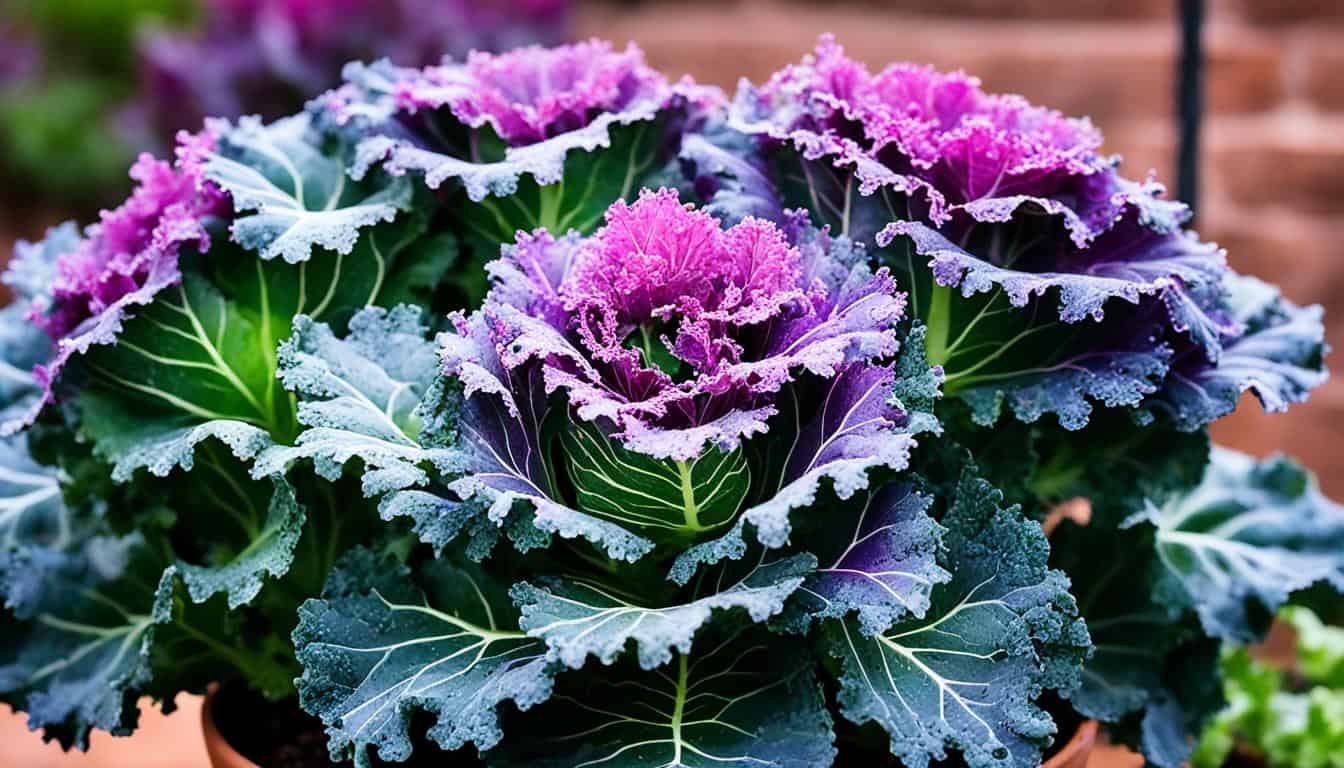
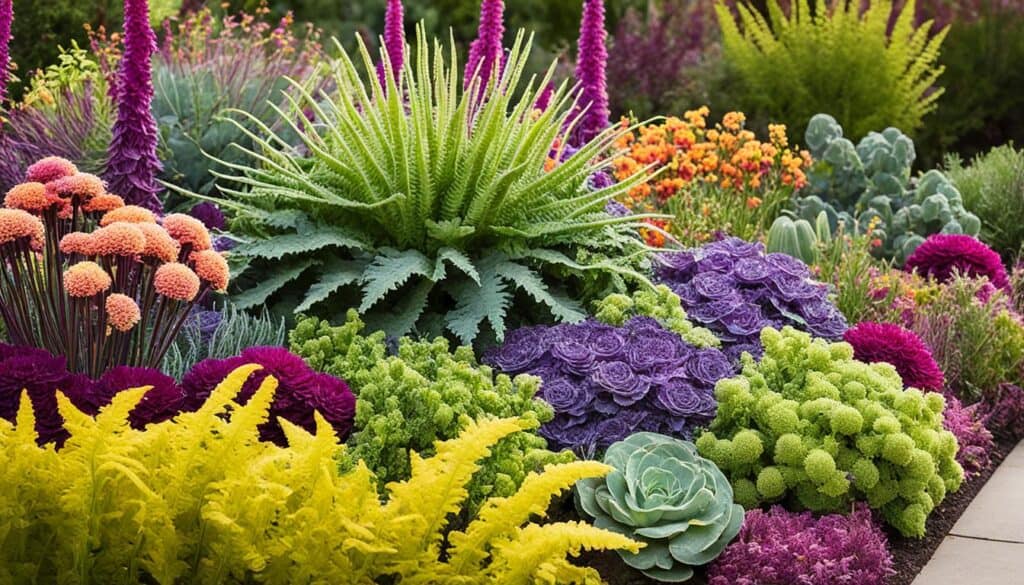
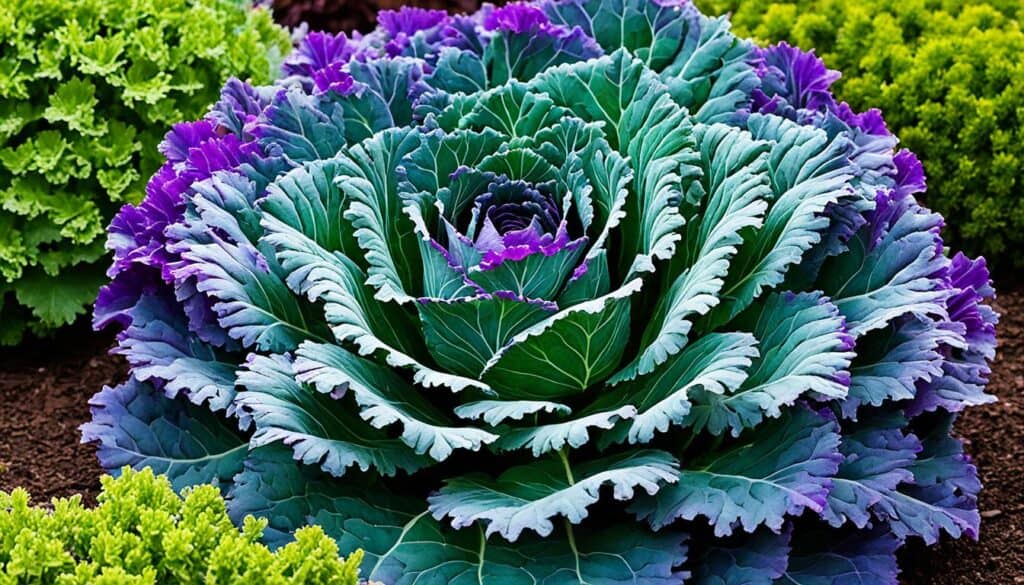
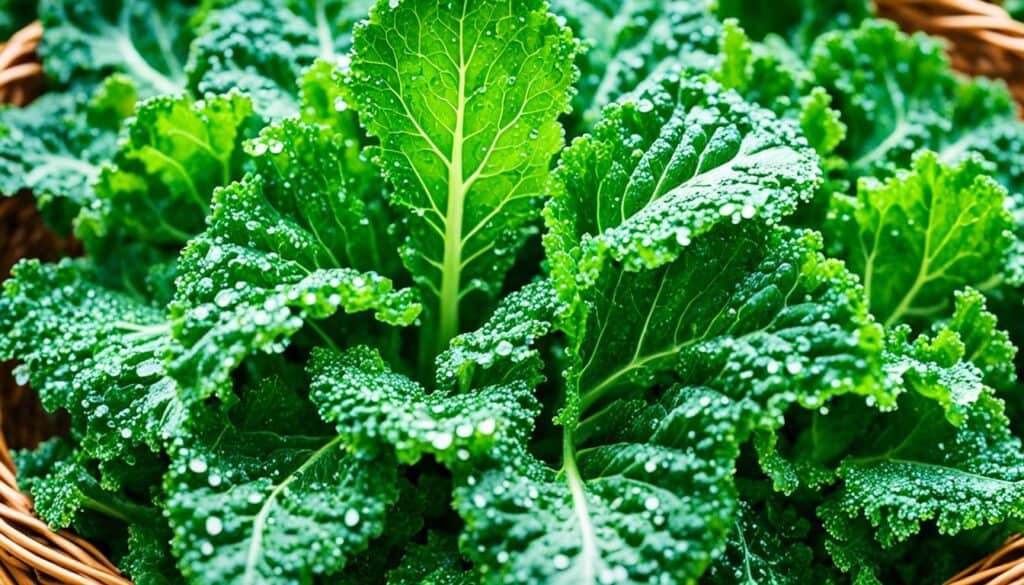
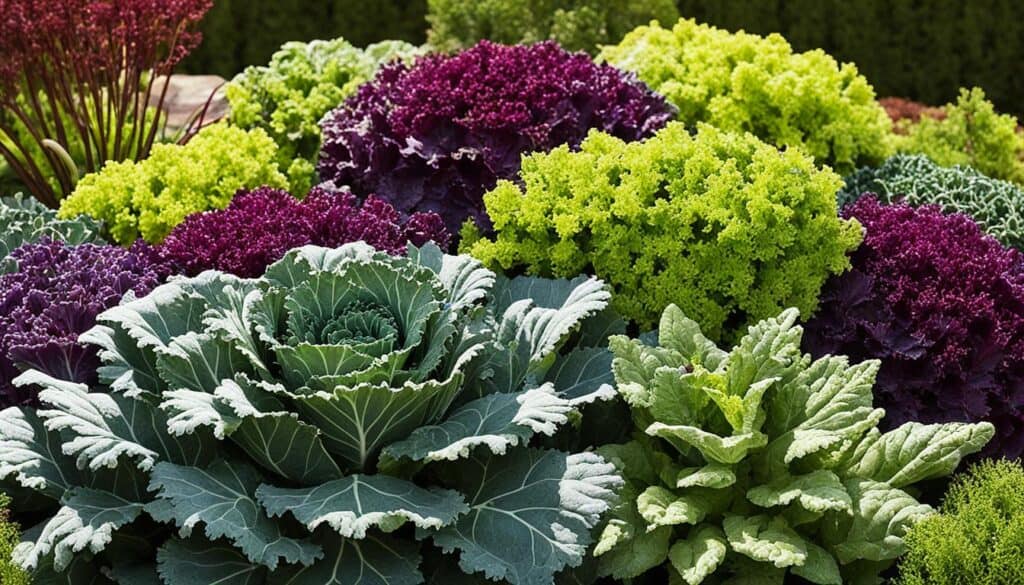




Leave a Reply